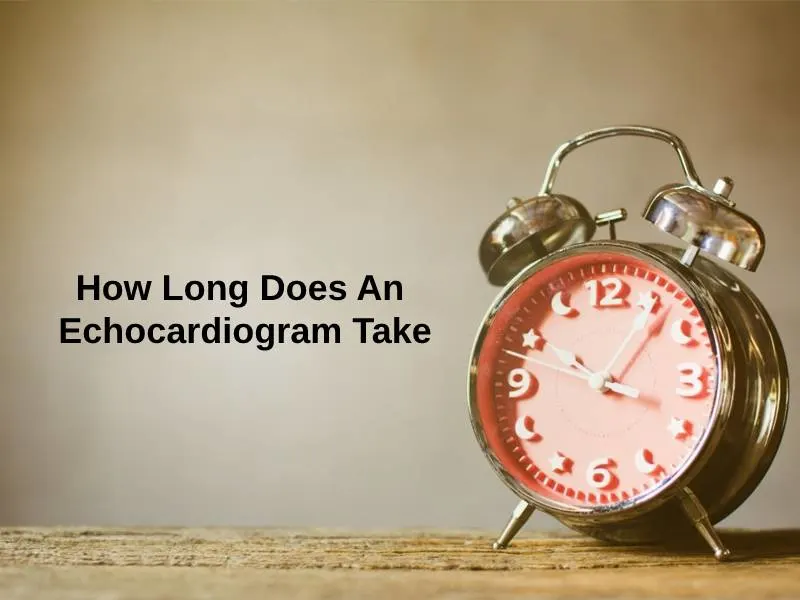Exact Answer: 20 To 40 Minutes
An echocardiogram is a procedure of creating a graphic outline of the functioning of the heart. The principle behind the procedure of echocardiogram is echo tracing.

How Long Does An Echocardiogram Take?
On average, the complete procedure of echocardiogram takes from a minimum of 20 minutes to a maximum of 40 minutes. All the steps included in this procedure of having an echocardiogram are the major factors that determine how long an echocardiogram will take. In most of the common cases, echocardiograms include three phases. These three phases are, before an echocardiogram, during an echocardiogram, and after an echocardiogram. All these phases altogether make a complete procedure of echocardiogram.
If the person is having a normal echocardiogram, then the first phase, that is, before an echocardiogram phase takes only about 5 to 10 minutes to get completed. Patients are normally taken to the echocardiogram room where they are given a gown to dress in. ECG leads, or also referred to as electrodes are placed on the patient in different regions of his chest and stomach. This step is the most crucial step which allows accurate acquisition of images during the echocardiogram.
Although, it is important to note that this is the case when taking a normal echocardiogram. As there are certain different types of echocardiogram, majorly, stress echocardiogram. During the stress echocardiogram, before the echocardiogram phase takes about 15 to 20 minutes to get completed.
After the first phase, the next phase, that is during the echocardiogram phase the main step when the echocardiogram test is taken. This step takes around 15 to 20 minutes to get completed. The echocardiogram procedure is performed on a specially designed echocardiogram table.
In most cases, the patient has to lay over to their left-hand side and they are given a wedge to place behind their right side of the body. The reason behind this is that laying towards the left-hand side allows doctors to get clearer images because the heart is positioned in such a way.
The last phase, that is, is after the echocardiogram phase. In this step, the ECG leads are removed and the patient is allowed to rest for a couple of minutes. This step takes around 5 to 7 minutes to get completed.
| Phases Of Echocardiogram | Time |
| Before an echocardiogram | 5 to 10 minutes |
| During an echocardiogram | 15 to 20 minutes |
| After an echocardiogram | 5 to 7 minutes |
Why Does An Echocardiogram Take That Long?
To understand why an echocardiogram takes that long, it is important to know the complete procedure of having an echocardiogram done. The time duration also depends upon the type of echocardiogram that is being done.
Transthoracic echocardiogram a technician, or also known as a sonographer spreads gel on a device called a transducer. The sonographer further presses the transducer firmly against the skin of the patient aiming an ultrasound beam through the chest to the heart of the person. Furthermore, the transducer records the sound wave echoes from the patient’s heart. A specialized computer then converts the echoes into moving images on a monitor. These results are known as echocardiograms.
A transesophageal echocardiogram is done if the doctor either wants a more detailed image or it is normally difficult to get a clear picture of the patient’s heart with a standard echocardiogram procedure. In this procedure, the throat is numbed, and the person is given medications to help him or her relax.
After that, a flexible tube that contains a transducer is guided down the throat of the person and into the tube which connects the mouth to the stomach, which is scientifically known as the esophagus. The transducer then records the echoes from the heart and a computer converts those echoes into detailed moving images of the heart, which can be viewed on a monitor.
Conclusion
In most cases, the images of the heart are taken in 3 different areas. These areas are, front of the chest over the area that is also called the sternum, the left side of the chest wall, the ribs on the right-hand side under the armpit area, and the area at the top of the stomach just underneath the ribs.